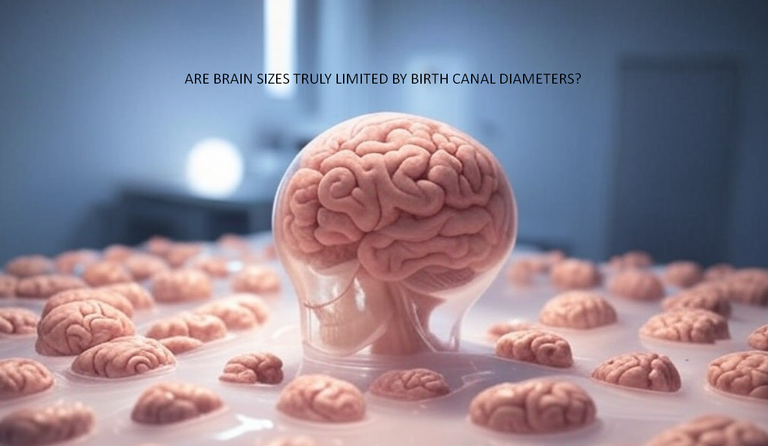If you are an ardent user of social media like X, you will see many takes—from the most factual and scientifically accurate to the most egregious and factually incorrect ones. When incorrect takes come from small accounts, one can easily disprove such with facts and figures, especially if you have more influence than them. However, when big accounts start spreading misinformation, putting them in their place is usually difficult. It takes more effort to correct the misinformation and when finally done, there is no way to undo those that have consumed the information without looking back.
If you are yet to understand what I've been trying to say, take a look at the post in the screenshot below carefully. The original post can be found here.


Yes. You are seeing right. The post was made by the owner of X himself, Elon Musk. Undoubtedly, this man is the most influential user as far as the X app is concerned. Now, let's analyze the content of the post in order to understand the entire theme of this post.
The post was made in response to another post - an excerpt from a peer-reviewed journal which reported that new generation of babies are being born with bigger cranial volumes, more gray matter, and larger hippocampuses compared to what we are used to as humans. In other words, the research effectively concluded that, on the average, new generation of babies have bigger brain than older generation.
Reading through the research, the study opined that larger brains in newer generation compared to old generation is probably the reason there have been a decrease in the incidence of dementia.
Elon Musk responded to the post by claiming that newer generations tend to have bigger brain because many were born through Caesarian sectioning compared to the older generations. In other words, he's claiming that the passage through the birth canal during vaginal births tend to have effects on the size of the brains of babies. Without even thinking about it, one would understand how ridiculous this claim is.

The Science Behind Brain Size and Birth Canal Constraints
To understand this better, we must delve into human anatomy and evolutionary biology. The human brain is exceptionally large compared to other primates, but the size of a baby’s brain at birth is carefully balanced by the width of the mother’s pelvis. This compromise, known as the "obstetric dilemma," ensures that the baby’s brain can grow rapidly after birth while still allowing for safe delivery through the birth canal.
Scientific studies confirm that a newborn’s brain size, around 350-400 cm³, is determined by genetics and prenatal development rather than the mode of delivery. The increase in brain volume in recent generations, as noted by the study Musk referenced, is likely influenced by better nutrition, healthcare, and prenatal care rather than the prevalence of C-sections.

C-Sections and Brain Size: What Does the Research Say?
C-sections account for approximately 21% of births globally, according to the World Health Organization. While this surgical procedure does bypass the constraints of the birth canal, it does not directly influence the brain size of the baby at birth. The head and brain size are already determined by the time of delivery. Claims like Musk’s reflect a misunderstanding of basic biology and oversimplify a complex interplay of factors.
Additionally, studies have shown that although C-sections have allowed for safer births in certain high-risk pregnancies, they have not significantly altered evolutionary pressures on brain size. In fact, the rise in cranial volume in recent generations is more closely linked to societal advancements rather than delivery methods.


The Evolutionary Perspective
The obstetric dilemma illustrates the trade-offs that have shaped human evolution. While our ancestors developed larger brains to enhance cognitive abilities, the pelvic anatomy adapted to allow for bipedal locomotion, leading to the current balance. This is why human babies are born relatively underdeveloped compared to other mammals, allowing their brains to continue growing postnatally. This growth pattern is called "secondary altriciality."
If C-sections were the primary driver of increased brain size, we would expect to see a rapid and disproportionate increase in brain size among populations with higher C-section rates. However, no such evidence exists to support this hypothesis.

Addressing Misconceptions
Misinformation, especially from influential figures, can spread quickly and mislead large audiences. To combat this, it is essential to rely on scientifically verified information. For example, a study published in Nature Communications in 2016 emphasized that the increase in human brain size over millennia is primarily attributed to genetic and environmental factors rather than changes in delivery methods.
Furthermore, claims about brain size and intelligence often lack nuance. While larger brains can correlate with greater cognitive abilities, other factors like neural connectivity, environment, and education play equally significant roles.

Conclusion
The idea that C-sections have significantly influenced brain size in recent generations is not supported by scientific evidence. Instead, advancements in healthcare, nutrition, and living conditions have played a more substantial role in improving brain development. It is crucial to critically evaluate such claims, especially when they come from influential individuals, to prevent the spread of misinformation.
As parents, educators, and global citizens, our responsibility is to seek truth through reliable sources and foster an environment where science-based knowledge prevails over conjecture. By doing so, we ensure that future generations benefit from accurate information, aiding their intellectual and societal growth.

References
Charles DeCarli, Matthew Pase, Alexa Beiser et al. Secular Trends in Head Size and Cerebral Volumes In the Framingham Heart Study for Birth Years 1902-1985, 30 January 2023
Rosenberg, K. R., & Trevathan, W. R. (2015). The evolution of human childbirth. Scientific American, 313(3), 64-71.
Mitteroecker, P., & Fischer, B. (2016). Increase in Caesarean sections and evolution of childbirth. Proceedings of the National Academy of Sciences, 113(27), 7486-7491.
O’Connell, C. M., & Nelson, R. J. (2018). Obstetric constraints on brain size evolution in humans. Nature Communications, 9(1), 749.
World Health Organization. (2021). Global prevalence of Caesarean section. WHO report.
Miller, C. T., & DeSilva, J. M. (2020). Evolutionary trade-offs in human childbirth. American Journal of Physical Anthropology, 171(Suppl 70), 1-14.
McAuliffe, K., & Kuzawa, C. (2017). Brain growth and development: The importance of prenatal and early childhood nutrition. Annual Review of Nutrition, 37, 5-23.
Posted Using INLEO
Thanks for your contribution to the STEMsocial community. Feel free to join us on discord to get to know the rest of us!
Please consider delegating to the @stemsocial account (85% of the curation rewards are returned).
You may also include @stemsocial as a beneficiary of the rewards of this post to get a stronger support.